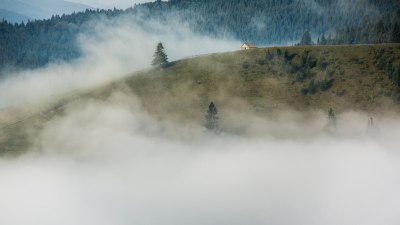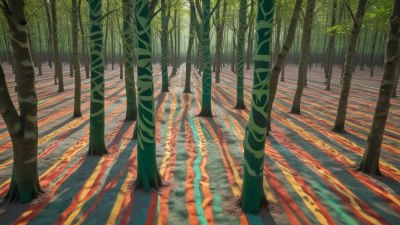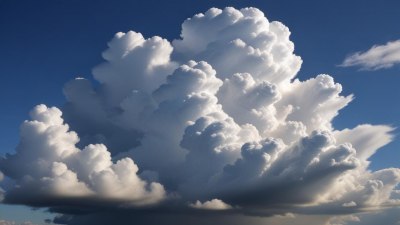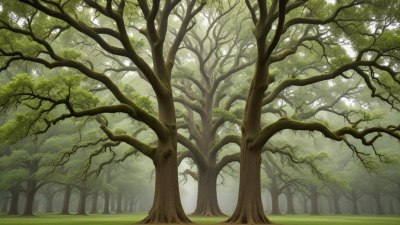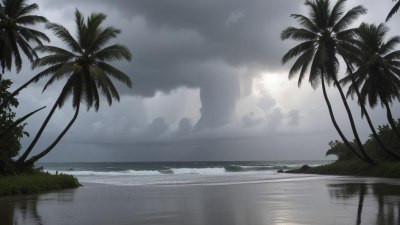Why the First Snow of Winter Feels Different from All Other Snow
Explore the unique emotions and experiences tied to the first snowfall of winter.
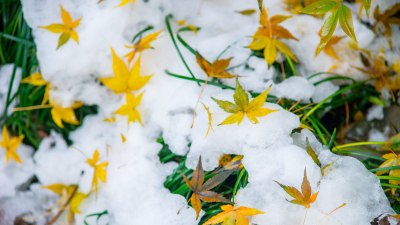
The first snow of winter holds a special place in our hearts, evoking memories and emotions that other snowfalls can't replicate. This phenomenon is not merely a matter of weather; it intertwines with our experiences, cultures, and even our senses. Throughout the ages, the significance of the first snowfall has been celebrated in various ways, each steeped in its own tradition.
The Anticipation Before the Snow
As winter approaches, there’s an unmistakable anticipation in the air. As the leaves fall and the days grow shorter, people begin to yearn for the beauty and magic of snowfall. The first prediction of snow is often met with excitement and hope, stirring childhood memories of past winters. This time of year brings a sense of renewal, where the world prepares for a white blanket to cover the earth, transforming landscapes into a winter wonderland.
The Sensory Experience
When the first flakes begin to fall, they bring with them a flurry of sensory experiences. The sound of snowflakes landing is uniquely peaceful. Unlike the hustle and bustle of rain, snow creates a hush in the surroundings, muffling sounds and inviting a moment of stillness. As you step outside, the crisp and cold air invigorates, making your breath visible in small puffs of white. The visual spectacle of large, soft flakes tumbling from the sky can be mesmerizing, transforming your routine surroundings into a scene from a storybook.
The Transformation of Landscape
The world looks distinctly different during the first snowfall. It’s as if a clean canvas has been painted, erasing the imperfections of autumn and revealing the beauty of winter. Trees don their white coats, rooftops become frosted, and even the most mundane objects take on an enchanting quality under the snow's embrace. This transformation invites us to appreciate the world from a different perspective, sparking creativity and inspiration.
Childhood Memories and Traditions
For many, the first snow is a gateway to cherished childhood memories. Images of building snowmen, having snowball fights, and making snow angels flood our minds. These activities, often accompanied by laughter and joy, create a sense of nostalgia that encapsulates the innocence and magic of youth. Families often establish their own winter traditions, whether it's the first sled ride of the year or a gathering around hot cocoa after a day outdoors. These moments become timeless, showing how the first snowfall is more than just a weather event; it reassures us that some things remain consistent in an ever-changing world.
Emotional Resonance
The emotional weight of the first snowfall is profound. It ushers in a season of reflection, warmth, and togetherness. People often report feeling a wave of happiness or nostalgia when they see the first snow. This emotional resonance links us to our pasts and the communities we are part of. The first snow symbolizes hope and renewal, serving as a reminder of the beauty of change and the cyclical nature of life.
Winter Sports and Activities
With the first snow also comes the beginning of winter sports. Skiing, snowboarding, and ice skating attract those eager to embrace the cold. The excitement surrounding these activities becomes contagious as friends and family create plans for outdoor adventures. The first snow lays the groundwork for these sports, and enthusiasts passionately await the fresh powder that provides the ultimate playground. It marks the end of winter hibernation and the beginning of action-filled days spent in the crisp, cool air.
The Connection to Nature
The first snowfall also brings about a deep connection with nature. For many, it’s an invitation to step outside and appreciate the beauty of the natural world. Walking in a snowy landscape can feel almost meditative, allowing for moments of introspection and clarity. The stillness of a snow-covered environment invites us to tune into our surroundings and embrace the tranquility winter offers. Such experiences can evoke feelings of gratitude and contemplation that are often lost in the busyness of daily life.
A Cultural Perspective
Throughout history and across cultures, snow has held varying significance. In some traditions, the first snow is celebrated with festivals or rituals meant to welcome winter. Different cultures have unique customs associated with snow, making it a vital part of winter celebrations. Whether it’s lighting candles to symbolize warmth against the cold or participating in winter festivals, the first snow becomes a communal event—a shared experience that unites diverse groups of people as they embrace the beauty and challenges of winter.
Environmental Significance
Beyond its beauty and emotional impact, the first snow also serves an essential function in the ecosystem. Snow acts as insulation for plants and animals during the harsh winter months. It provides critical moisture to the earth as it melts, replenishing rivers and lakes essential for survival in warmer seasons. The uniqueness of the first snow lies not just in its aesthetic appeal but in its vital role in maintaining ecological balance. This connection between human experiences and environmental cycles highlights an important relationship that often goes unrecognized.
The Sentimental Value of Snow
The first snow of winter represents so much more than weather patterns. It encapsulates the emotions tied to childhood memories, the beauty of transformation, the excitement of the season ahead, and a sense of community and tradition. Each of us holds personal significance in the whimsical dance of snowflakes, making it an irreplaceable part of our winter experiences. As we step into winter, let the first snowfall remind us of the gentle magic nature offers, inviting us to slow down, reconnect, and cherish each moment.


